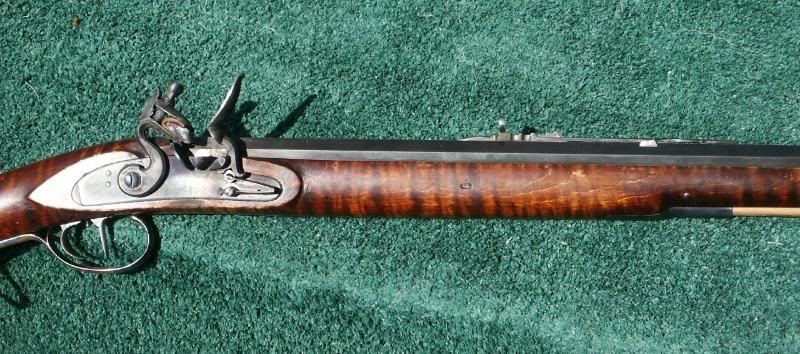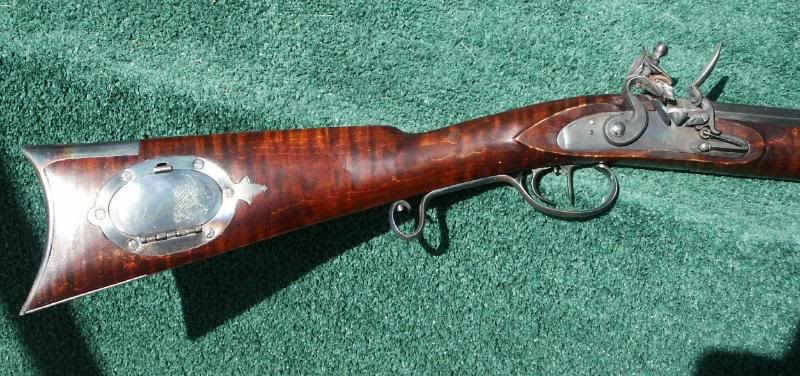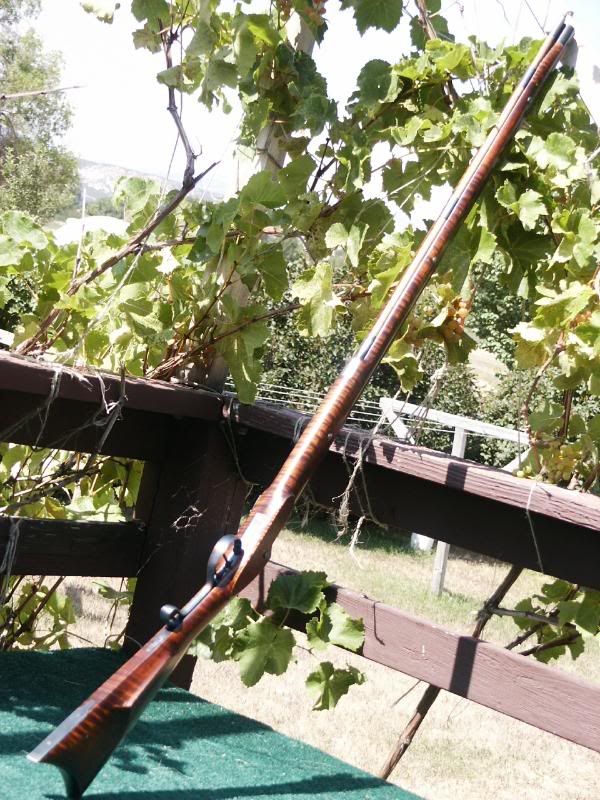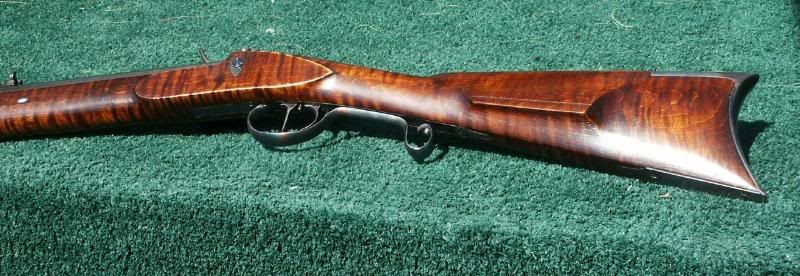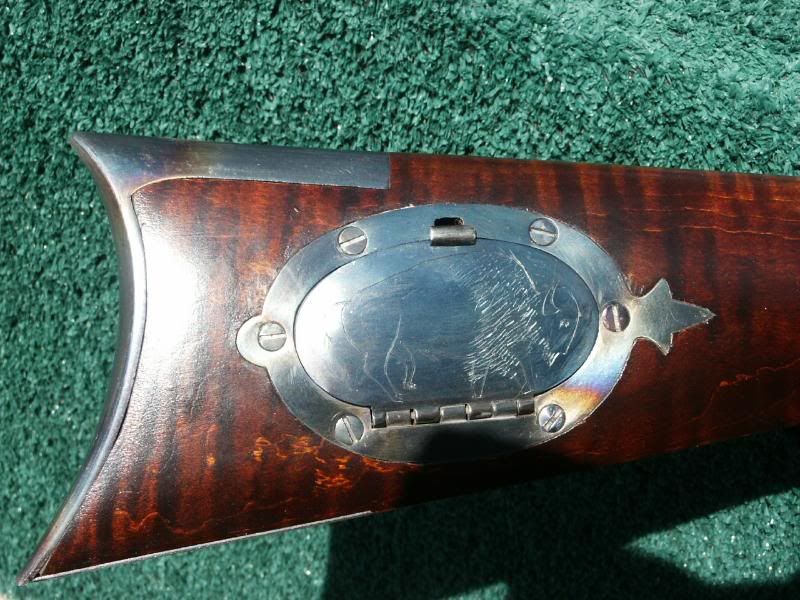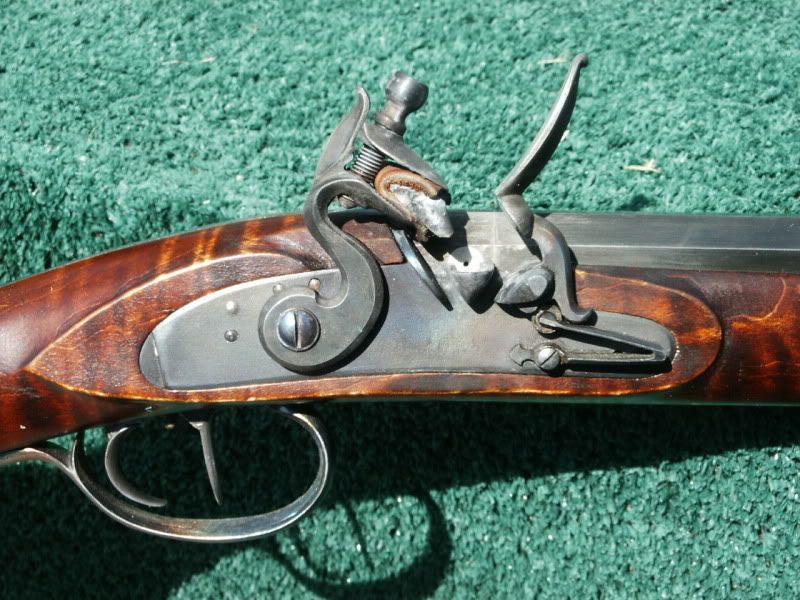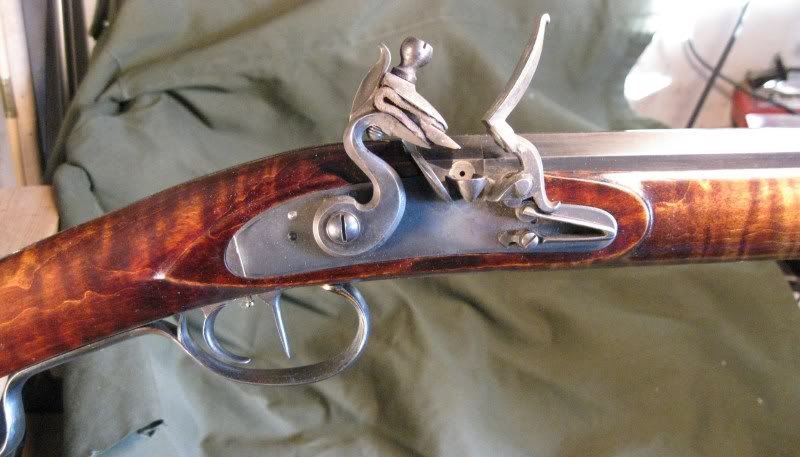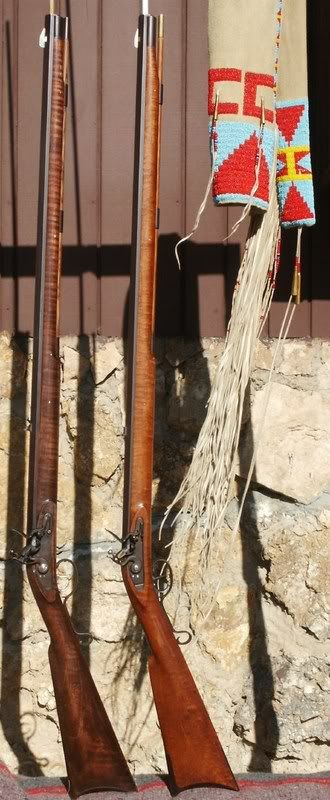flintlock62 said:
There is a full stock Hawken on record. J&S Hawkens father built guns in the east. This is one of his rifles.
As to whether any full stock Hawkens went into the mountains, we are not sure, but mountain people did not take to the new percussion system right off and stuck to their flinters. To my understanding, not too many percussion Hawkens half stocks went into the mountains, they were too expensive. Percussion caps were not reliable until about 1850.
1) There are in facty lots of fullstock Hawkens still extant and yes some did go to the mountains including the ones owned by Jim Clyman, John Brown, and several others.
According to the research available probably the most common Hawken prior to the late 1830's and early 1840's were full-stocks and not half-stocks. Sam was still building full-stocks in the 1850's including the only for certain flint lock mountain rifle.
2) The too expensive argument is in fact a bit old hat - while it's true they were more expensive than the common trade rifles as made by Henry and others, they were not that much more expensive and when one compares them to like rifles such as the iron mounted Henry's the price is the same or close.
Provost owned two of them in 1828/29 and in 1829 McKenzie of Ft Union ordered a Hawken.
While it is true that the Hawken rifles were not the most widely used rifle during the "rendezvous" era, neither were they non-existent and neither were they necessarily that much more expensive (this is one of those "factoids" oft repeated that does not necessarily hold true, especially when comparing like rifle to like rifle - i.e the steel mounted Henry as compared to the iron mounted Hawken). As to price - IMO comparing the simpler semi-mass produced brass mounted Lancaster or English model trade rifles to the semi-custom iron mounted Hawken is like comparing a Lyman GPR (a fine rifle for what it is) to say a Don Stith Hawken - both will git 'er done, but they are not in the same league...
Here are some facts based on Primary Source records:
1834 American Fur:
-10 steel-mounted rifles "certainly Henry flints, cost $17.50" [MFTQ quote here, not mine]
-six steel-mounted Hawken rifles [so far the earliest reference of Hawkens at Rendezvous]
-30 NW guns
1834 RMF:
-5 American steel-mounted rifles @ $17.50 each
-20 NW guns and a dozen replacement NW gun locks
1836 American Fur Company invoice 1836:
2 Am Rifle @$17.50 (steel mounted Henry Lancasters?)
7 " " @$11.00 (brass mounted Henry Lancasters?)
8 Hawkins " from $20 to $26
2 Rifles Hawkins @$24
1837 American Fur Company invoice 1837:
5 Am. Rifles steel mounted @$19 (Henry Lancasters)
10 Hawkens Rifles @$24
12 N W Guns @$4.5
NOTES: the dates of these sales are admittedly late for the "rendezvous" period, but then the western fur trade DID NOT end in 1840!.
1) These records not only shows that Hawken rifles were for sale in the mountains, but for those two years at least there were more Hawkens sent west by the AMFCo than Henry's of all types!
1) As to the Hawkens being expensive: the price differential when comparing the like rifle to like rifle, steel mounted Henrys to the iron mounted Hawkens, is at most $8.50 ($17.50 to $26.00) and at least $1.00 ($19.00 to $20.00) - at most this a difference of 2-3 beaver plews (average price of plews was $3-5.00 at this time). And even when comparing the brass mounted Henry Lancaster to the Hawken there is a difference of: at least a $9.00 and at most a $15.00 - a difference of 3 - 5 beaver plews. Now this is a difference for sure, but not the extraordinary difference implied by many........
3) Percussion caps were reliable long before 1850- 1) In 1827 the "American Shooter's Manual" noted that eastern sportsman were almost exclusively using shotguns fitted with percussion locks.
2) General Ashley 1829, "I have used the percussion locks locks but little, but believe them admirably well constructed for general use, but more particularly for the prairies, where the severe winds and rains prevail at certain season of the year."
3) In Sept 1831 and again in December 1833, the US government ordered for the Western Indian trade, some 2150 guns from Deringer. One shipment included," 217 percussion and 93 flintlock rifles complete, at $12.50 each: 217,000 percussion caps at 80 cents per thousand; [and] 310 woolen covers at 37 1/2 cts......"
4) In 1834 shortly after founding Fort Hall in Idaho - N. Wyeth and his party -
"percussioned three rifles, our powder being so badly damaged as to render flintlocks useless."
Here's Nat Wyeth's journals/correspondence -
http://roxen.xmission.com/~drudy/mtman/html/nwythint.html
5) August 1837, Osborne Russell's hunting companion, "shot a Grizzly Bear and bursted the percussion tube of his rifle which obliged us to return to our comrades...and make another tube." Journal of a Trapper -
http://roxen.xmission.com/~drudy/mtman/html/ruslintr.html
6) Famed Mountain Man, Jed Smith was killed by the Comanches along the Santa Fe Trail in 1831 - the pistols taken from him had been converted from flint to percussion.
7) H. H. Sibley after a hunting mishap, 1839, "........Now my opinion...is that, any man calling himself a sportsman who will not use a percussion, when he can procure one, in lieu of a flint-lock gun, should be furnished with a strait jacket at the public expense."
8) The US Armies Hall breechloaders were first fitted with percussion locks in 1831 (surprisingly early considering that the miltary was notoriously slow about modernizing). Still most of the world's armies, including the US, had by and large had at least begun switching to caplock firearms by 1840-42 (the so-called Mississippi Rifle was the first such widely used US long arm) .
9) It didn't take long for the percussion system to move west, early in 1832, John Martin of Little Rock, Ark. advertised, " Guns and Pistols with common locks, fitted with percussion locks, at the shortest notice." - In other words he was advertising that he could convert ones "common lock", i.e. flintlock, to percussion at short notice, indicating that there was a plentiful supply of not only parts, but caps as well.
10) American Fur Company brigade leader Lucien Fontenelle bought his Hawken in 1832 and it was definitely a percussion since he also bought caps at the same time.
11) Mtn Man Kit Carson was an early (circa 1839) advocate of Colt's percussion revolvers and longarms, as were the Texas Rangers (1837-38) and Josiah Gregg (1839) and his brother who were outfitted with Colt revolving pistols and rifles.
12) Warren Ferris 1830-35 mentions using a cap lock during his tenure in the mountains." Don't forget," cried my comrade, "that all my hopes of salvation are centred in your rifle-ball." The animal was feeding quietly, and I was enabled to approach within some sixty yards of him, when levelling, I pulled trigger, ”” but the cap, being damp, burst without a discharge . The noise caught the quick ear of the buffalo, and caused him to look round;”” however, seeing nothing to excite his alarm, he soon resumed an employment more agreeable to his taste than needless vigilance.
Having put fresh powder into the tube, and supplied it with another cap I was again raising to take aim, and had brought my piece nearly half shoulderward, when it unceremoniously discharged itself, burying its ball in the lights of the buffalo ””the very spot I should have selected had it been optional with myself." (NOTE: since the cap went off with a loud noise I doubt it was the cap but rather a plugged nipple)
By the later 1830's and early 1840's the use of the cap lock was generally well on it's way to making the flintlock all but obsolete except amongst the Indians and some of the old die hard frontiersman. Journals of the period mention Still Western Indian trade guns at least were produced with flintlocks well into the late 1860's, but this may not so much have been due to the lack of caps, but rather their method of hunting buffalo on horseback, where the flintlock was easier to load and self-prime.
Availability of caps in the west: Hansen's book "The Hawken Rifle It's Place in History" has several references to caps being available in St Louis at least by 1830, just 3 short years from the time they were considered de riguer in the "East" (in 1827 the "American Shooter's Manual" noted that eastern sportsman were almost exclusively using shotguns with percussion locks and by 1830 rifles as well). By 1834-35 several vendors in the St. Louis area were advertising quantities of caps in the 100,000's and within another couple of years later they had them in the millions. As to getting them out west, although it may seem on the face of things that such "luxuries" were hard to get many rendezvous trade lists don't necessarily uphold this view. Not only that, but by the late 1820's and early 30's several forts and trading posts, Uncompaghre (1826), Laramie (1834), Union and it's satellites 1829, Hall (1834), Bent's, (1834), etc. as well as the Santa Fe trade made things more easily available.

